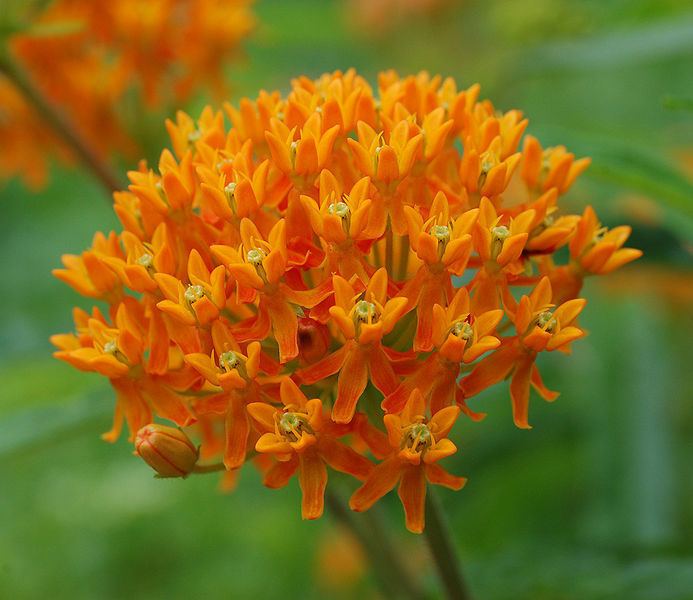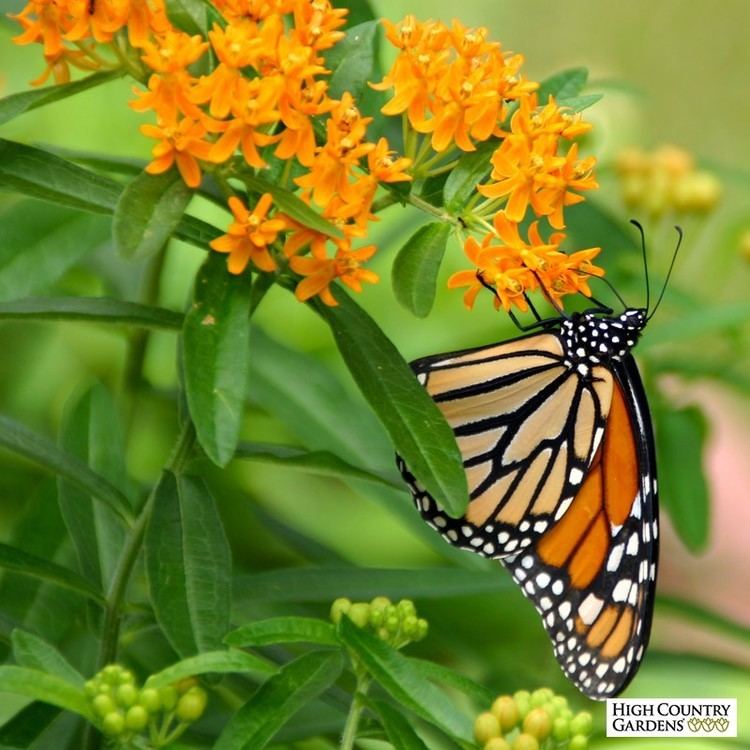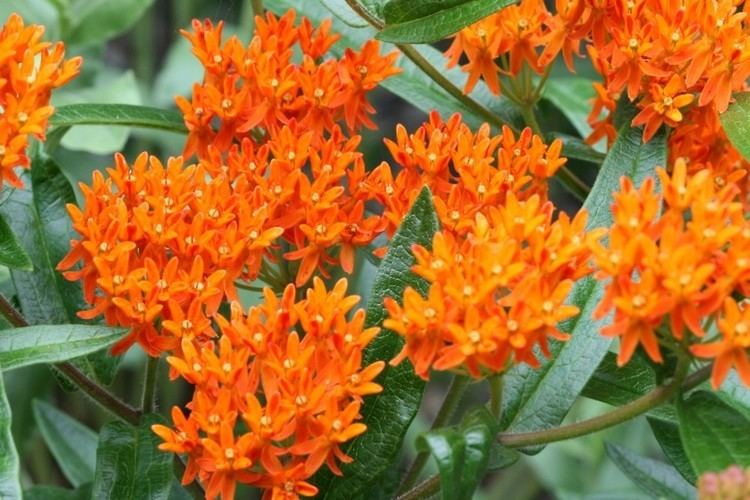Kingdom Plantae Tribe Asclepiadeae Scientific name Asclepias Rank Genus | Subtribe Asclepiadinae Higher classification Asclepiadinae | |
 | ||
Lower classifications Common milkweed, Butterfly weed, Asclepias curassavica, Asclepias incarnata, Asclepias speciosa | ||
Plant portrait common milkweed asclepias syriaca
Asclepias L. (1753), the milkweeds, is an American genus of herbaceous perennial, dicotyledonous plants that contains over 140 known species. It previously belonged to the family Asclepiadaceae, but this is now classified as the subfamily Asclepiadoideae of the dogbane family Apocynaceae.
Contents
- Plant portrait common milkweed asclepias syriaca
- Milkweed flowers
- Ecology
- Uses
- Species
- Formerly placed here
- References

Milkweed is named for its milky sap, which consists of a latex containing alkaloids and several other complex compounds including cardenolides. Some species are known to be toxic.

Carl Linnaeus named the genus after Asclepius, the Greek god of healing.
Milkweed flowers

Asclepias species produce some of the most complex flowers in the plant kingdom, comparable to orchids in complexity. Five petals reflex backwards revealing a gynostegium (fused stamen filamens and styles) surrounded by a five-membered corona. The corona is composed of a five paired hood and horn structure with the hood acting as a sheath for the inner horn. Glands holding pollinia are found between the hoods. The size, shape and color of the horns and hoods are often important identifying characteristics for species in the genus Asclepias.

Pollination in this genus is accomplished in an unusual manner. Pollen is grouped into complex structures called pollinia (or "pollen sacs"), rather than being individual grains or tetrads, as is typical for most plants. The feet or mouthparts of flower-visiting insects such as bees, wasps and butterflies, slip into one of the five slits in each flower formed by adjacent anthers. The bases of the pollinia then mechanically attach to the insect, so that a pair of pollen sacs can be pulled free when the pollinator flies off, assuming the insect is large enough to produce the necessary pulling force (if not, the insect may become trapped and die). Pollination is effected by the reverse procedure, in which one of the pollinia becomes trapped within the anther slit.

Asclepias species produce their seeds in follicles. The seeds, which are arranged in overlapping rows, bear a cluster of white, silky, filament-like hairs known as the coma (often referred to by other names such as pappus, "floss", "plume", or "silk"). The follicles ripen and split open, and the seeds, each carried by its coma, are blown by the wind.
Ecology
American milkweeds are an important nectar source for native bees, wasps, and other nectar-seeking insects, though non-native honey bees commonly get trapped in the stigmatic slits and die, and a larval food source for monarch butterflies and their relatives, as well as a variety of other herbivorous insects (including numerous beetles, moths, and true bugs) specialized to feed on the plants despite their chemical defenses.
Milkweeds use three primary defenses to limit damage caused by caterpillars: hairs on the leaves, cardenolide toxins, and latex fluids. Data from a DNA study indicate that more recently evolved milkweed species use these preventative strategies less but grow faster than older species, potentially regrowing faster than caterpillars can consume them.
Uses
The milkweed filaments from the coma (the "floss") are hollow and coated with wax, and have good insulation qualities. During World War II, over 5,000 t (5,500 short tons) of milkweed floss were collected in the United States as a substitute for kapok. As of 2007, milkweed is grown commercially as a hypoallergenic filling for pillows. A study of the insulative properties of various materials found that milkweed floss was outperformed by other materials in insulation, loft, and lumpiness, but scored well on various metrics when mixed with down feathers. Milkweed fibers are used to clean up oil spills.
In the past, the high dextrose content of the nectar led to milkweed's use as a source of sweetener for Native Americans and voyageurs.
The bast fibers of some species can be used for cordage.
Milkweed latex contains about 1 to 2% latex, and was attempted as a source of natural rubber by both Germany and the United States during World War II. No record has been found of large-scale success.
Grown commercially since 2012, particularly in Quebec, Asclepias is also known as "Silk of America" using a term "silk" attributed by the naturalist Charles Sigisbert Sonnini that was brought into France as an exotic plant and a silk to be included in fabrics. Silk of America is a strand of common milkweed (Asclepias syriaca) gathered mainly in the valley of the Saint Lawrence River in Canada. The silk is used to manufacture thermal insulation, acoustic insulation and oil absorbents.
Milkweed is beneficial to nearby plants, repelling some pests, especially wireworms.
Milkweed also contains cardiac glycoside poisons that inhibit animal cells from maintaining a proper K+, Ca+ concentration gradient. As a result, many natives of South America and Africa used arrows poisoned with these glycosides to fight and hunt more effectively. Milkweed is toxic and may cause death when animals consume 10% of their body weight in any part of the plant. Milkweed also causes mild dermatitis in some who come in contact with it.
The leaves of Asclepias species, and of some species formerly classified as Asclepias such as Gomphocarpus physocarpus, are the only food source for monarch butterfly larvae and other milkweed butterflies. These plants are therefore often used in butterfly gardening.
Species
Some Asclepias species:
Formerly placed here
Some species formerly classified under the Asclepias genus include:
